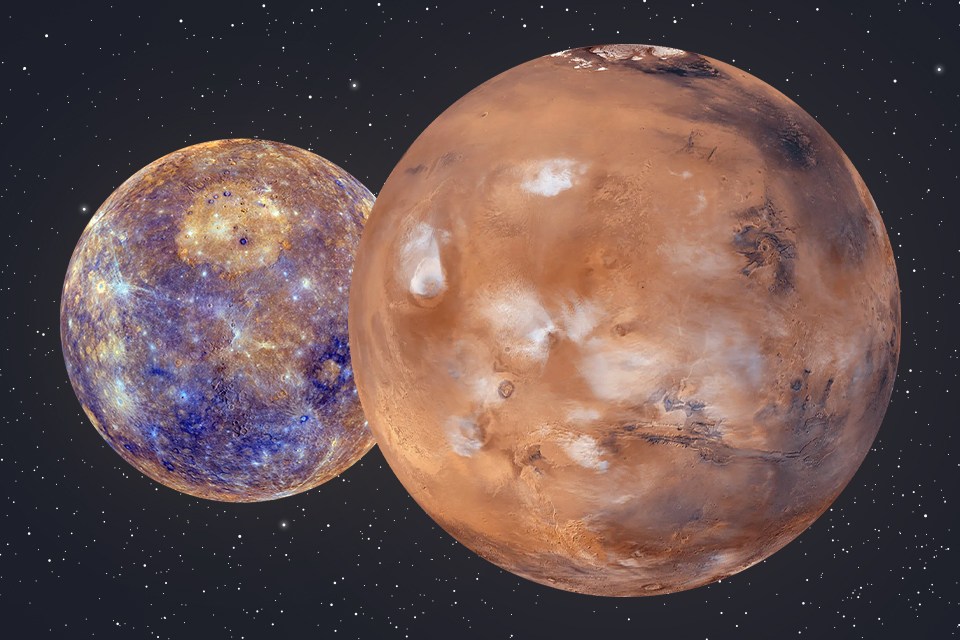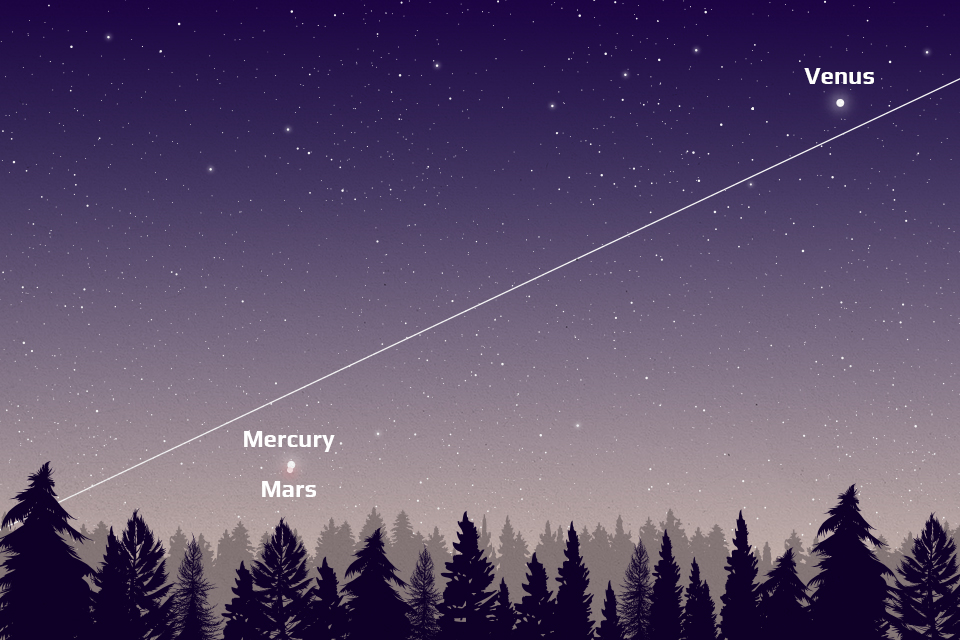Mars, the closest outer planet to us, makes one orbit around the Sun in 687 Earth days, and it turns out to be in the same configuration relative to the Earth on average every 780 days. This applies both to oppositions and conjunctions with our sun, when the Red Planet is located in the sky near it. And only during the latter, it can be seen near Mercury, the smallest planet in the Solar System. We will be able to observe such a “heavenly date” in the morning of January 27-28.
Unfortunately, during the morning periods of Mercury’s visibility, which fall in the first half of the year, the conditions for its observations are hardly favorable. In the last days of January 2024, its height above the horizon on the border of nautical and civil twilight (that is, with the “depth” of the Sun about 6° below the horizon) at the latitude of Kyiv will not exceed 2°. Even though the brightness is high enough, which at this time will reach negative stellar magnitudes, it will not be easy to see the planet. It is even more difficult to find Mars in the twilight sky, the brilliance of which will be only 1.3ᵐ. It is better to look for it with binoculars with magnification up to 15x and a sufficiently large field of view.

During the conjunction, the celestial bodies will be located in the southern constellation Sagittarius, which does not contain bright stars and generally does not rise high above the horizon in our latitudes. The best reference point will be Venus, the brightest planet in the Solar System. It will be separated from a pair of “weaker” planets by 12°, and it will rise almost an hour earlier. Mars and Mercury will later up near the point of its rising.

In less than a month, on the morning of February 22, a much brighter Venus will pass 38° north of Mars. This conjunction will be easier to observe, since it will take place at 26° from the Sun. The linear distance between the planets will be 0.772 AU (115 million km).
On March 24, 2024, Mercury will be in maximum eastern elongation — its angular distance from the Sun will increase to 18.7°. This will mean the onset of the best period of evening visibility of the smallest planet this year.
Follow us on Twitter to get the most interesting space news in time
https://twitter.com/ust_magazin


